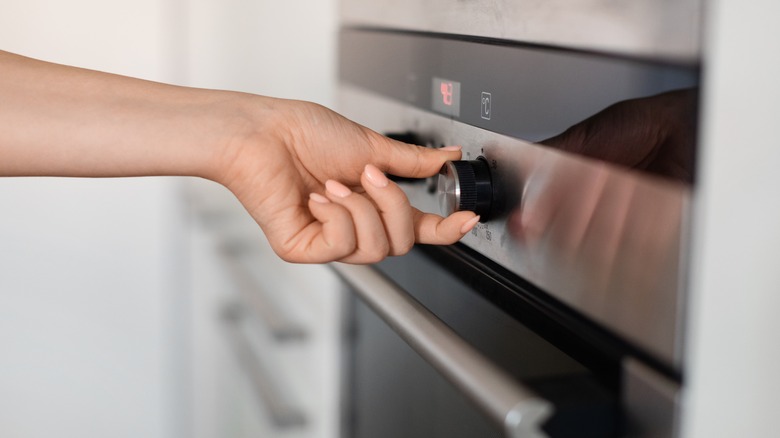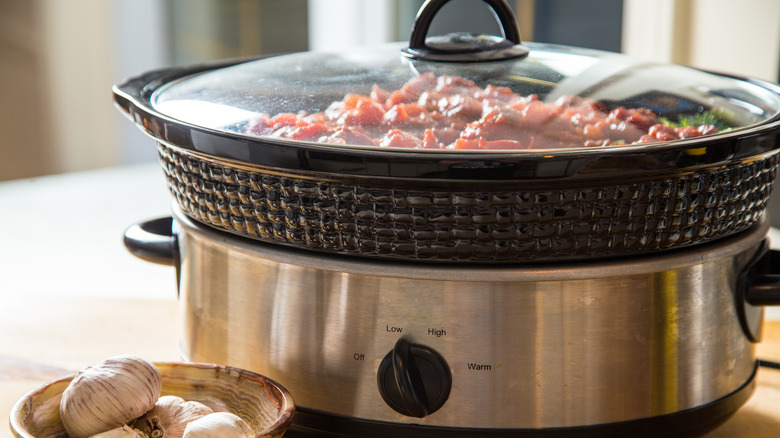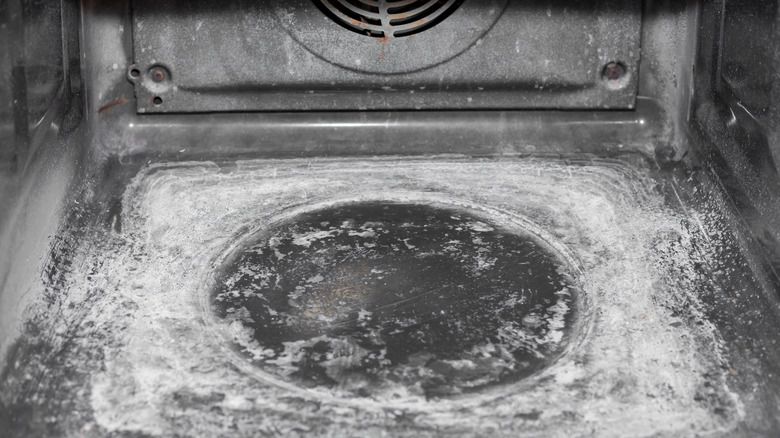Relying On The Delayed Start Function Could Kill Your Oven
In our busy day-to-day lives, we're always looking for ways to make things easier, especially when it comes to making dinner at the end of a long workday. Since appliances are increasingly getting more innovative, new features have enabled them to pick up the slack when we aren't home, akin to a robot maid. Unfortunately, not all of these perks are worth the expense.
New oven models often come with a delayed start function, allowing you to program it to start cooking at a later time. But this function puts an immense amount of additional strain on the mechanics, shortening the lifespan of your oven — a costly tradeoff for pot roast at 6 p.m.
In addition, there are several safety concerns with using the delayed start function. As the oven ages, it gets increasingly riskier as a fire hazard to use unattended. According to GE Appliances, the delay start function will begin cooking at a predetermined set time. However, that doesn't mean it will automatically shut the oven off when the food is done, causing a potential risk. The oven will need to be shut off manually, or a "Time Bake" or "Cook Time" program will need to be set.
How to safely cook meals unattended
The delayed start function may not be the best method to get dinner on the table faster, but there is a safer way. Instead of food sitting in your oven for hours before the cooking process begins, a slow cooker is a safer option. If done properly, this small appliance is safe to use unattended from a food and fire safety standpoint. Once the dish is cooked, the appliance will keep it warm for hours at a safe temperature.
According to the United States Department of Agriculture, perishable foods like meat, dairy, eggs, and fish should never be kept at room temperature between 40 and 140 degrees Fahrenheit for more than two hours. This temperature range, known as "the danger zone," happens once the food leaves the refrigerator. If your kitchen is hot, that safe time frame can shrink to one hour. Food left in the danger zone is more susceptible to dangerous bacterial growth that can lead to food-borne illnesses.
Keep in mind that the food continues to cook, even on the 'warm' setting, so adjust your cooking time and temperature if you need to keep food warm for hours. If you place the stoneware in the refrigerator prior to cooking, it will take longer to heat up. Use a digital thermometer before eating food left all day in a slow cooker to ensure the meal is held safely above 165 degrees Fahrenheit.
Other functions may kill your oven
The delayed start function isn't the only new oven feature that's initiating repair service calls; the self-cleaning option may also be to blame. This feature is attractive to homeowners since it doesn't require harsh chemicals or much elbow grease to remove caked-on spills and grease. According to Consumer Reports, nine out of 10 ovens have this feature.
To use this feature, however, ovens can exceed temperatures over 800 degrees Fahrenheit for up to five hours, which can blow fuses or burn out the heating element (as this writer once experienced). Regardless of whether the manufacturer will fix the problem for free, it can leave you without an oven or stove until it's rectified, so you may want to avoid using this feature right before hosting a dinner party just to be safe.
Nonetheless, if you rely on this feature to keep your oven looking new, limit to doing so once or twice a year. The self-cleaning feature should not be used for routine cleaning of your oven. If spills are addressed before the oven is used again, a household degreaser and sponge will be sufficient as food comes off easier than if it's allowed to bake and harden to the enamel.



